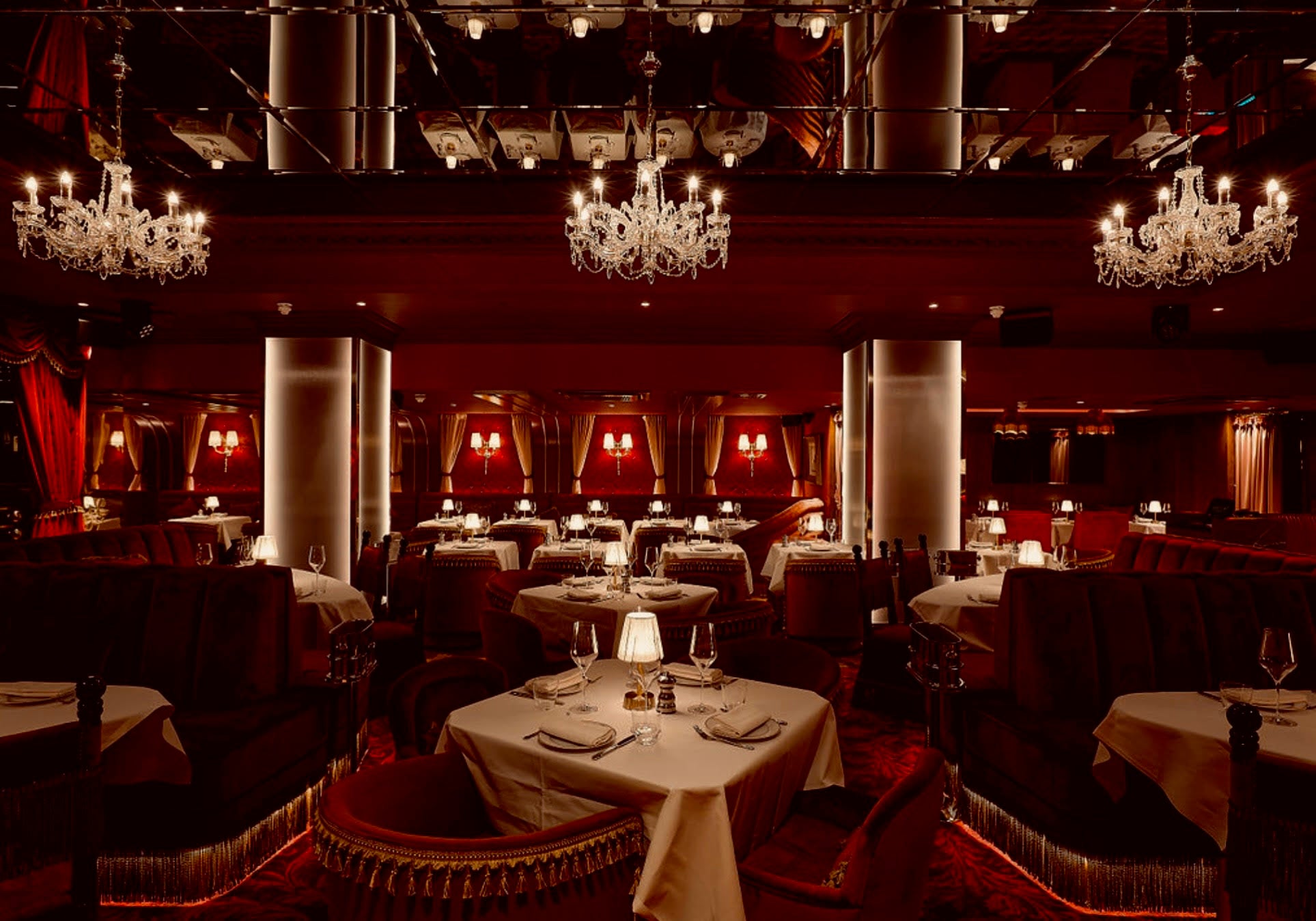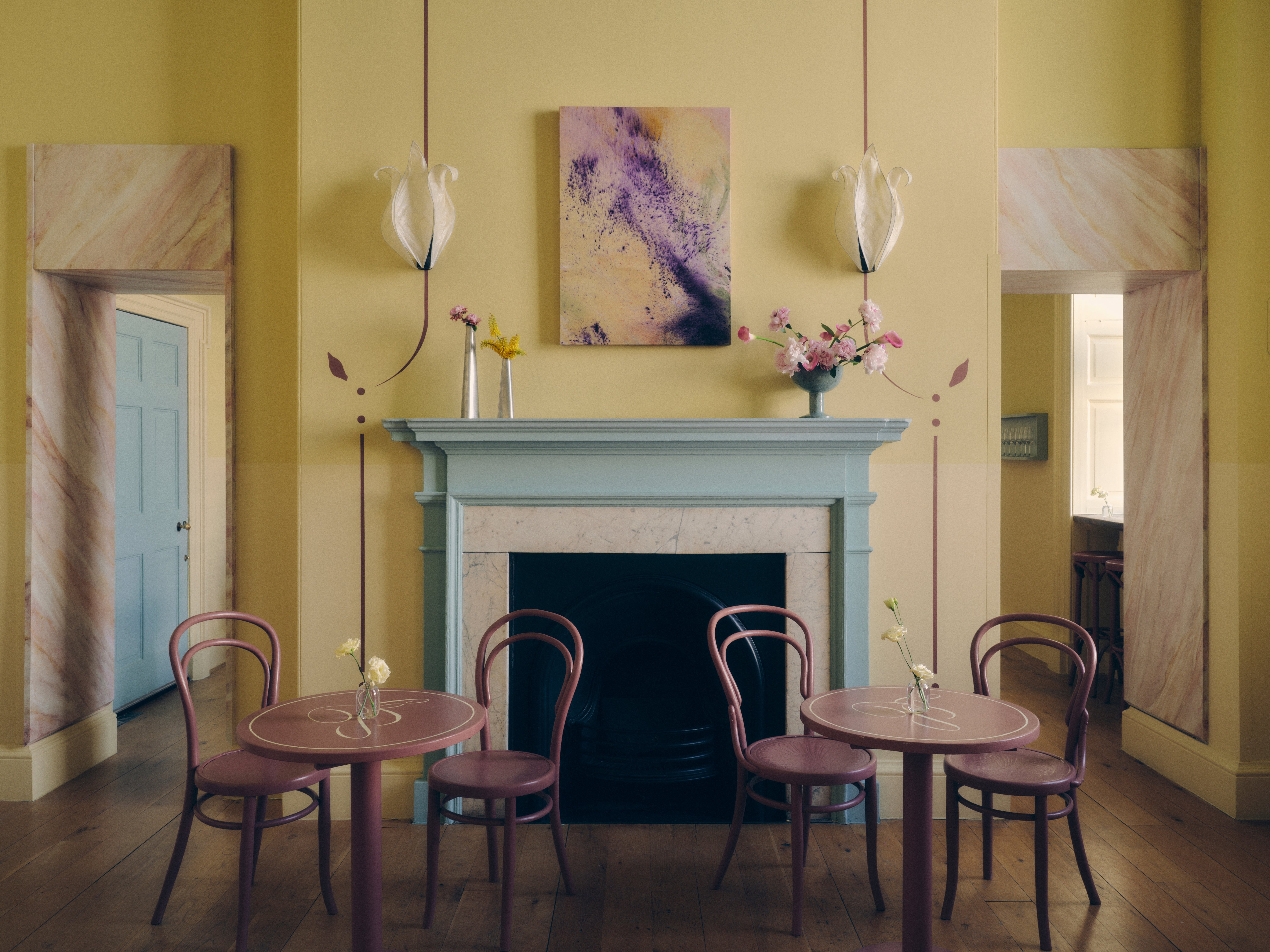How Instagram changed restaurant design forever
Spurred on by social media trends and influencers, diners have become ever more demanding when it comes to the visuals of where they’re eating out. Helen Salter asks the experts how aesthetics came to rule the roost

Your support helps us to tell the story
From reproductive rights to climate change to Big Tech, The Independent is on the ground when the story is developing. Whether it's investigating the financials of Elon Musk's pro-Trump PAC or producing our latest documentary, 'The A Word', which shines a light on the American women fighting for reproductive rights, we know how important it is to parse out the facts from the messaging.
At such a critical moment in US history, we need reporters on the ground. Your donation allows us to keep sending journalists to speak to both sides of the story.
The Independent is trusted by Americans across the entire political spectrum. And unlike many other quality news outlets, we choose not to lock Americans out of our reporting and analysis with paywalls. We believe quality journalism should be available to everyone, paid for by those who can afford it.
Your support makes all the difference.How do you pick a place to eat out? Do location, menu or price range sway you? Or is the deciding factor how good it will look on your Instagram stories? In today’s image-obsessed world, the criteria for choosing a restaurant are shifting. The inside view is now just as important as the food itself, with restaurant designers relentlessly competing to create the next big “look”.
This prerequisite for a picture-perfect space started in the 2010s with the arrival of Instagram, a free picture and video-sharing social network, initially only available for iPhone users. It capitalised on the “we eat with our eyes” concept – colourful snaps of nicely plated food were popular from the off. Meanwhile, the highly snappable “hipster cafe” was a real-life by-product of the app’s meteoric rise: a minimalist, faux-industrial space furnished with hanging lightbulbs, exposed brick and house plants. This trendy visual style could be found the world over, from Cape Town to Melbourne. Then along came the “Instagram wall” – whether it be a neon-lit slogan or majestic pair of wings – created specifically for people to take pictures in front of and post onto the ’gram.
Fast forward to 2024, and Melanie Liaw, co-founder of boutique interior design studio Duelle, explains that there’s been a cultural shift away from the staged photo opp into something more expansive: “We’re in another phase now. We’re moving away from ‘Instagram moments’ and thinking about an interior space, knowing that it’s not just the people sitting at the table looking out, it’s the world looking at it through someone else’s lens,” she says.
What was once a physical corner carved out for social media has broken free of its shackles to encompass the whole restaurant, Liaw tells me. “When designing a space, you know it’s going to be heavily photographed and videoed,” she says. “How is it going to show up in all 360 degrees? You make sure everything is revolved. I think that’s important; you want everything to be picture-worthy”.
The hospitality industry’s reliance on the Insta-friendly aesthetic, plus our habit of showing off our lives online, has led to a rise in experience-driven restaurant design. “It’s certainly the buzzword at the moment, and I think that will continue. It’s kind of always been there but it’s becoming more what people are asking us to do now,” Ed Plumb, founder of design studio Studio Found, tells me. “Diners are a lot pickier now than they were before; the cost of going out is a lot so people want to feel like it’s justified.”
The much-hyped, French-owned restaurant group Big Mamma is one of the early adopters of this experiential dining trend. Specialising in affordable luxury dining, their lavish, Italian-inspired designs remain the biggest draw – from 1970s capri-style Gloria in Shoreditch to bedecked Jacuzzi in west London, spread across four floors and fitted with Roman statues and Murano glass.

Since Big Mamma Group’s first London opening in 2019, four more sites have sprouted across the capital, with a new site planned for Manchester. “It really sells this experience of being theatrical and over the top – you’re going to feel special, but you can afford it,” Liaw says. “It’s somewhere to take people to be like, ‘We live in London, and this is somewhere we can just go.’”
Tori Coates, managing director of Cheshire-based interior design company Jojo Bradley, claims restaurant design is being taken more seriously post-pandemic. “There is more funding behind commercial projects now. Clients are reinvesting more money back into that,” she says. “There was that point where the world stopped and we all stopped going out for meals, and when we started going out again, the competition was ‘Who are we going to go to? It’s got to be elevated from my own home.’”
The 2010s’ signature stark colourways and the deliberate act of exposing the raw infrastructure of the venue had become passe, replaced with a desire for polish and grandiosity. “People are looking for a bit of escapism and a sense of awe,” Liaw tells me. “Our recent interior design for Café Petiole at Somerset House paired buttery yellows with greenish-blue and ashy rose. There is something a bit romantic and over the top about the colour palette, people can really feel the joy of the space even through photos.”
People are looking for escapism and a sense of awe
Diners are also looking for cosiness and a feeling of immersion. Take The Little Violet Door, a Soho bar and restaurant that mimics the look and feel of a house party. There’s also the boom in competitive socialising, where games such as darts are brought into jazzy venues with a food and drink offering to boot. “I was chatting to an investor, and they say it’s a win-win,” says Plumb. “It’s a quick turnaround and people are drinking all the way through.”
Ellen Pryce, founder of Leeds interior design agency Nanu Group, claims influencer culture is having a tangible impact on her designs. “A lot of our clients are bringing videos of influencers in Bali or Miami, whereas they may not have seen that before.” Pryce’s recent projects include an NYC-inspired deli, a Parisian members lounge and a Mexican restaurant. “Our clients’ eyes are being opened to exotic design, and that is purely because of how great the social media influence is.”
But how do designers strike a balance between creating spaces that follow fashion to attract clientele while managing to outlive fickle social media trends? “Instagram isn’t really much help for us in terms of us increasing our business,” says Plumb. “It’s essentially copying other people and replicating something that exists. Sometimes we have to do stuff that is trend-driven if the client wants that, but we tend to lead them a little bit further away from that.”

What Liaw takes issue with is when a restaurant’s shareability is valued above practicality: “I really care about experience and function, and not compromising on those for clickbait. There is something worrying about if you prioritise the algorithm, because it’s always fleeting.”
Pryce has noticed a surge in “chameleon spaces” – restaurants that transition into nightclubs – where not only will you find a DJ booth, but musicians, jazz bands and aerial acrobatics: “We’re getting a lot of requests for that from our clients, more than we ever have,” she says.
Mistress of Mayfair, one of Pryce’s recent projects, is a Parisian-style restaurant and after-hours lounge in Mayfair. The space is reminiscent of a 1920s salon, with red suede banquette seating, plush velvet curtains and gold tasselled chairs. “The food is French and it’s plated exceptionally, but then it turns into ‘How much can we drink, can we dance on the table?’”
Everyone’s expectations are so high right now. Social media has a big part to play in that
Fusing food with entertainment has drifted in and out of fashion throughout culinary history, but why is it now back in vogue, when customers’ purse strings are tight? For one, restaurateurs are hoping to make their customers stick around for longer. But Pryce believes it’s also attributable to a new standard for what it means to “go out out”. “Everyone’s expectations are so high right now. Social media has a big part to play in that,” she says. “People expect the furniture to be fantastic, the fabric to be different, they just want entertaining.”
“I think it really annoys people nowadays – to have to pay and go out,” Liaw muses. “We got a lot of comfort when we were home for a few years during Covid. I think when people go out, they want to make sure they’re having a nice experience.”
Just like the world of fashion, interior design is cyclical, and with the lightning pace of the digital world, trends can be over before they’ve even made their mark. So which types of spaces can we expect to dine in in the future? “I feel like we’re starting to see the end of maximalism,” says Plumb. “The high-end venues with big budgets will still do it – they can afford to. It’s expensive to design like that. What you’re starting to see if you visit these places that have done it on a budget is that they might look good in a photo but when you’re there they don’t live up to expectations and they don’t wear very well.”

Plumb has noticed the rush to design high-concept, Italian-influenced venues starting to slow, with a gradual return to cleaner visuals. “It’s simple, but simple done well – not being white tablecloths and a white room, but beautiful materials and a palette that has only got three to five different materials in it which complement one another.”
It seems that extra is out, simple is in. But whichever aesthetic is in vogue, we’re likely to be putting style on par with substance when choosing our next meal out for the foreseeable.
Join our commenting forum
Join thought-provoking conversations, follow other Independent readers and see their replies
Comments